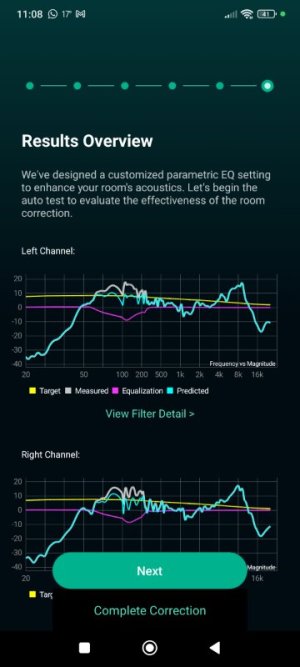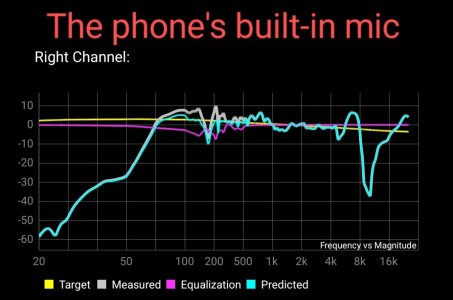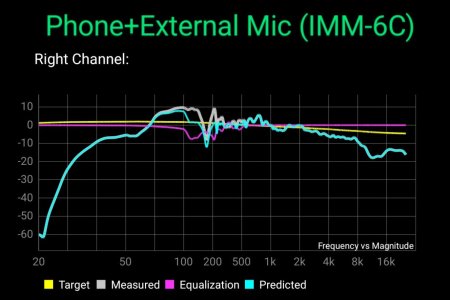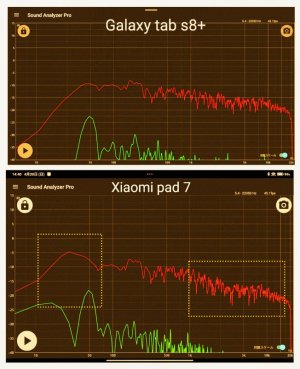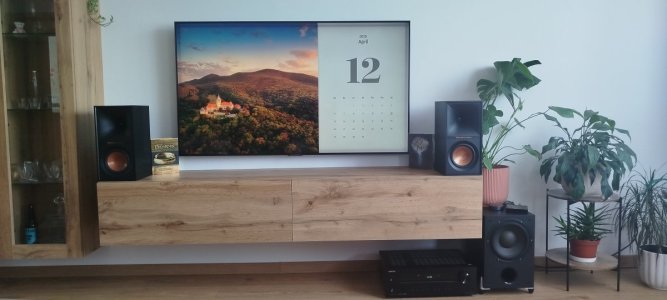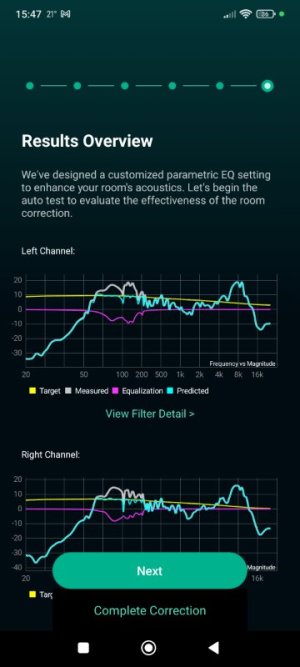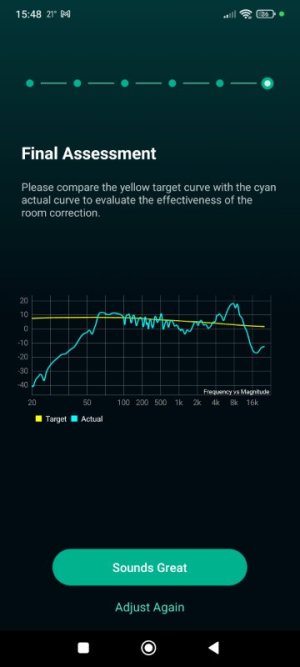This was measured by placing the phone on the floor near the right side Sub. It is very similar to yours. Many similar photos have been posted in past RC threads. Depending on the phone used, the results for bass and treble can be different, but I think you will get relatively close results in the mid-range. (also it is not impossible to find peaks and dips in the bass range, even with the built-in mic.)
View attachment 20191
Next, Here are the results from the same phone with the IMM-6C mic installed (with the mic in the same position).
View attachment 20192
Comparing the internal mic and the external mic, I see that the results are close between 75Hz-4kHz.
#Another thing to note is that Android produces different results in the low frequencies on some models, even with an external mic. This is a very tricky issue. Therefore, I think need to compare several models, use a PC to measure, and use own ears to adjust the low-frequency balance. (I have done so.)
This is a comparison I recently made between my Xiaomi pad 7 and Galaxy Tab S8+. Both were measured from the exact same position using the IMM-6C mic.
View attachment 20193
When I first saw this, suspected I had made a mistake. However, no matter how many times measured it, the results were exactly the same.

